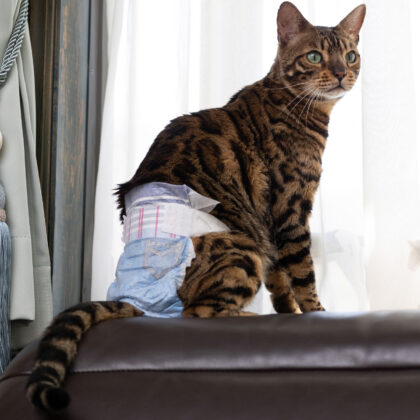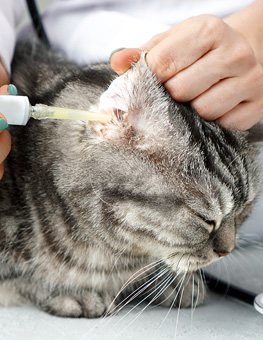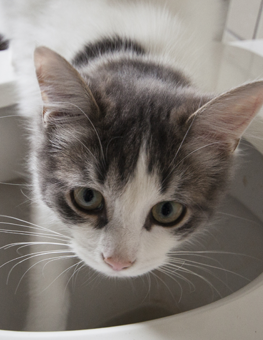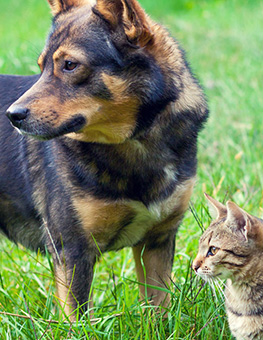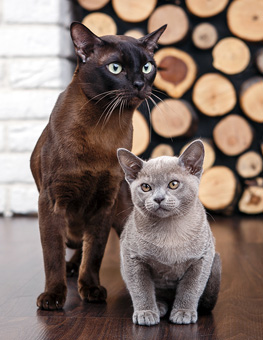Fleas and Your Cat
If you own a cat, you may experience a flea problem at some point. But what you don’t know about fleas could harm you and your pet. Get the facts and keep your pet and home safe.
What is a flea?
Fleas are parasites that need to feed off a host’s blood to stay alive. There are several types of fleas in the world that feed on different animals, but the most common are cat fleas. Don’t let the name fool you — cat fleas bite cats, dogs and people, too.
Fleas are small (about 2 mm long), brown, wingless insects with laterally compressed bodies that allow them to move swiftly through fur. Their legs are adapted for jumping and grasping onto their host. They feed on blood, digesting only small amounts, and excreting the remainder as small, dark, fecal pellets called "flea dirt." Typically, a hosted adult can survive up to two months. Without a blood meal, adult fleas will die in a few days. Fleas live outdoors but will easily survive inside your home.
Flea Facts
- In just 30 days, 10 female fleas can multiply to over a quarter million new fleas in different life stages.
- Fleas can jump vertically up to seven inches and horizontally thirteen inches.
- Female fleas start producing eggs within 24 to 48 hours after taking their first blood meal and can lay up to 40 to 50 eggs per day.
- Optimum conditions for flea larvae are 65-80 ºF with shaded areas and high humidity.
- Flea pupae can lie dormant for many months or can change into adult fleas in as few as 5 days.
Flea life stages
Because adult fleas require a blood meal, all flea life stages usually occur in the vicinity of the host. The flea goes through four life stages: egg, larvae, pupae and adult. The flea life cycle lasts from a few months up to a year, depending on environmental conditions. Only adult fleas bite, but a home flea infestation will keep producing adults until measures are taken to break their life cycle.





